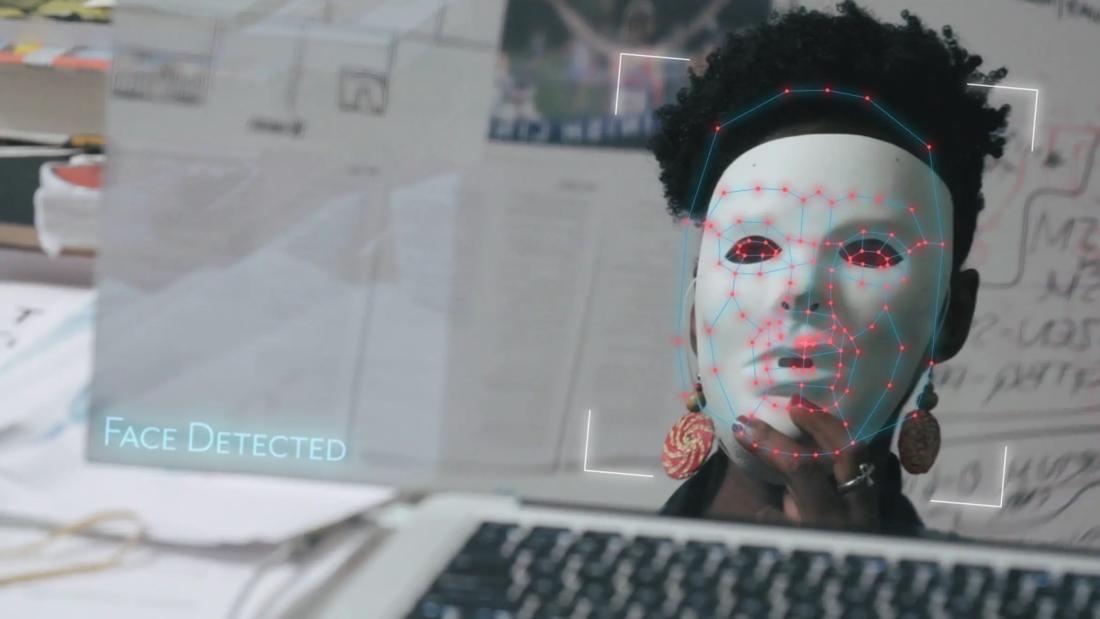
Media Arts Center: Digital Gym Cinema San Diego, CA
Professor Amy Alexander
Computing in the Arts, UC San Diego Visual Arts
Coded Bias— Under their eye: Who truly benefits from the bias of mass surveillance?
Program Description
The Dissecting Visions of Identity and Care in the Future series evaluates how cinema’s interpretation of the future frames humankind within intersections of surveillance, race, healthcare, identity, and A.I. advancements. We are particularly interested in how the technological advancements presented in these films have implications for present day systemic injustices.
In this presentation, Professor Alexander discusses the ongoing fight for equality and regulation of algorithmic and facial recognition technologies.
Presented At
Media Arts Center: Digital Gym Cinema San Diego, CA
Film Synopsis
An exploration of the implications of MIT Media Lab researcher Joy Buolamwini's startling discovery that racial bias is written into the code of facial recognition algorithms.
Modern society sits at the intersection of two crucial questions: What does it mean when artificial intelligence (AI) increasingly governs our liberties? And what are the consequences for the people AI is biased against? When MIT Media Lab researcher Joy Buolamwini discovers that most facial-recognition software does not accurately identify darker-skinned faces and the faces of women, she delves into an investigation of widespread bias in algorithms. As it turns out, AI is not neutral, and women are leading the charge to ensure our civil rights are protected.
Image courtesy of Shalini Kantayya
About the Speaker
Amy Alexander is a professor and hackernaut who has been making computationally-based art projects since the 1990s. Amy is a Professor of Computing in the Arts in the Visual Arts Department at UC San Diego. She is an algorithmic filmmaker and performer who has focused throughout her career on the fuzzy borders between media and the world. Amy’s work has frequently addressed algorithmic subjectivity in digital culture by creating transparently biased, sometimes funny alternatives. Her latest project returns to this theme — this time taking on the attention economy and social influence of algorithms used for social media rankings and facial classification. Using computer vision and machine learning-based methods of curation and production, What the Robot Saw, is a perpetual live stream that depicts the cinematic fantasy of the surveillant AI robots who “see” the social media content few humans get to experience.
Amy’s art practice has spanned net art, software art, computationally-based installation, audiovisual performance, and film. Her research and practice over the years has focused on how contemporary media – from performative cinema to social media – changes along with cultural and technological shifts. Amy’s projects have been presented on the Internet, in clubs and on the street as well as in festivals and museums. She has written and lectured on software art, software as culture, and historical and contemporary audiovisual performance. She has served as a reviewer for festivals and commissions for new media art and computer music. Her recent lectures span topics including algorithmic bias and subjectivity, cultural anthropologies of gender roles in 20th and 21st century computing, and systems and disruption in 20th and 21st century media.
Amy – who has also worked under the names Cue P. Doll and VJ Übergeek – was one of the early artists working in the development of generative net art, beginning in 1996 with the Multi-Cultural Recycler, a widely-exhibited site that spoofed both net celebrity and faux multi-culturalism on the web. In addition to her art projects, she was also a co-founder and moderator of the Runme.org software art repository, an early member of the TOPLAP live coding collective, and has been active in algorithmic and media art curation. Amy’s projects have been exhibited and performed at venues ranging from The Whitney Museum, Prix Ars Electronica, Transmediale, SIGGRAPH, NIME, ICLC (International Conference on Live Coding), and the New Museum to club performances at Sonar (Barcelona), First Avenue (Minneapolis) and Melkweg (Amsterdam). She has also performed on the streets of Los Angeles, San Diego, San Jose, Zürich, and Aberdeen, Scotland.
Amy received an MFA from CalArts, where she studied live action and experimental animation, as well as new media. Experimental animation practices continue to figure heavily into Amy’s research and practice. Her research on 20th century audiovisual performance artist and inventor Mary Hallock Greenewalt led her to developing the Mary Hallock Greenewalt Visibility Project, an online database and archive devoted to increasing visibility of Hallock Greenewalt’s archives and work. Amy’s recent performance project PIGS (Percussive Image Gestural System), is a live performance and research project focused on using silent percussion as a means to create improvisational, structured visuals.
Amy’s past lives have included work as a musician, a record store manager, a video camera operator / editor / technician, a 3D animator, a television and new media effects developer, and a systems administrator. She programs in Python, Max/MSP/Jitter, Processing, and a few others, lately focusing on developing strategies for critical approaches to machine learning and computer vision in cinematic art practice. She plays the drums, and occasionally still stumbles around on bass, guitar, and violin.